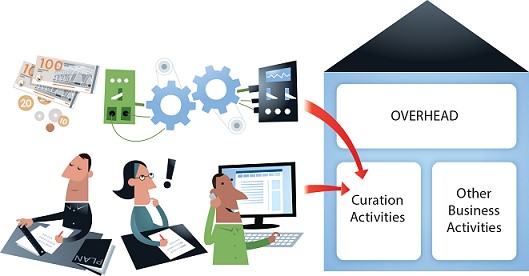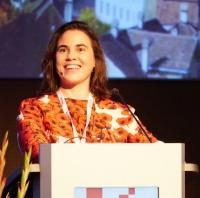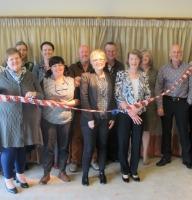DPC
Announcement of the 'Bit List' of Digitally Endangered Species
The Digital Preservation Coalition (DPC) welcomes you to join them for the announcement of the 'Bit List' of Digitally Endangered Species as part of International Digital Preservation Day on 30th November 2017.
The DPC's 'Bit List' of Digitally Endangered Species is a crowd-sourcing exercise to discover which digital materials our community thinks are most at risk, as well as those which are relatively safe thanks to digital preservation. By compiling and maintaining this list over the coming years, the DPC aims to celebrate great digital preservation endeavors as entries become less of a ‘concern,’ whilst still highlighting the need for efforts to safeguard those still considered ‘critically endangered.’
Preservation as a present
Barbara Sierman is Chair of the Board of Directors for the Open Preservation Foundation (OPF) and Digital Preservation Manager in the Research Department of the Koninklijke Bibliotheek (National Library of the Netherlands).
20 Years of preservation have brought us valuable insights, useful tools and a large quantity of digital material that is now taking care of.
For the general public, used to their tablets and phones where everything is stored for them somewhere in the cloud and new updates are almost always compatible with older versions, the issue of preservation is invisible. This is very convenient for them, but not for us trying to get political attention and sustainable funding for our invisible activities.
Most people however value their digital stuff. This “digital capital” should be in our story to convince funders when asking for budgets to preserve the digital materials. Preservation should not be a problem but a commodity. Something that helps you to take care of your stuff in a way you were not aware of. Like water that comes out of the tap: reliable, clean and always available (at least in part of the world). Only a few will know about the organisation behind this clean water. Although often taken for granted, in fact the running water is a present, resulting from a wide range of carefully planned actions. Similarly the preservation community could mirror this water model.
Preserving digital cultural heritage: Better together!
Barbara Signori is Head of e-Helvetica at the Swiss National Library, Bern.
The Swiss National Library has a mandate to collect, catalogue, store and disseminate the cultural heritage created in Switzerland and abroad by and about the Swiss. This sounds like a clear enough mission, but dig deeper and this mandate raises all sorts of tough questions especially in a digital world.
First of all, what is digital cultural heritage? Obviously it goes far beyond e-books and e-journals, it includes Swiss websites, newsletters of Swiss societies, and so on. But what about all the digital data that is created by Swiss people every minutes of every day? The selfies, blogs, tweets, social media, personal digital archives. I’m sure that not everything can or should be considered cultural heritage. But who decides what is and what isn’t?
Web preservation demands access
Daniel Gomes is Arquivo.pt Service Manager for the Foundation for Science and Technology in Portugal.
"Collect the web to preserve it?! I don't envy that job."
That is a direct quote from my first "real-world" meeting.
I was 23 years old, I had just graduated from the University and that was my first job. We were in the year 2000.
One year later, we had developed a running prototype to perform selective collection of online publications. It was the first effort to preserve the Portuguese web, resulting from a collaboration between the National Library of Portugal and the University of Lisbon.
Even in those early-days of the Web, it became clear that acquiring and storing information from the Web before it quickly vanished was a challenge. But a rather simple one, in comparison to ensuring the accessibility of the stored web data across time.
Creating a Linked Data version of PREMIS
Evelyn McLellan is President of Artefactual Systems and member of the PREMIS Editorial Committee.
It has been a busy couple of years for the PREMIS Editorial Committee. Since June 2015, when we released version 3.0 of the PREMIS Data Dictionary, we have been revising and releasing supporting documentation such as revised Guidelines for using PREMIS with METS and Understanding PREMIS, and updating and enhancing the preservation vocabularies, particularly the eventType vocabulary.
Perhaps the biggest undertaking, however, has been the preparation of a new OWL ontology by a working group that includes some members of the Editorial Committee plus external Linked Data experts and preservation practitioners. This is a work in progress and we are hoping to release a draft soon for a period of public review and feedback.
The Costs of Inaction: advocating for digital preservation
Neil Beagrie is Director of Consultancy at Charles Beagrie Ltd

Illustration by Jørgen Stamp digitalbevaring.dk CC BY 2.5 Denmark
Traditionally the major challenge in digital preservation has been seen to be technology obsolesence. However, arguably the organisational challenges, particularly funding (and advocacy for funding), have proved to be much more significant over time.
In recent years an increasing number of community efforts have focussed on helping organisations to identify benefits and write a business case for digital preservation. The Keeping Research Data Safe (KRDS) Digital Preservation Benefits Analysis Tools and the Digital Preservation Business Case Toolkit are good examples.
Stop, collaborate and listen! NSLA’s here with a successful vision
National and State Libraries Australasia (NSLA) is a leading library sector collaboration of the National, State and Territory libraries of Australia and New Zealand.
How Australasian libraries are working together on digital preservation
How often do you leave a conference, or a meeting, with the best intentions of “collaborating more”, only to see those intentions evaporate quicker than rain on bitumen on a hot summer’s day, as soon as you return to your desk and look at your email inbox? We don’t make these statements flippantly; most of us share a sincere commitment to work together, recognising that for us to move forward and progress our work, we need help from others. Sadly though, what happens next is that reality takes over. Business-as-usual kills the best intentions.
Despite this, the national libraries of Australia and New Zealand and state and territory libraries of Australia have found a model of collaboration that has proven to be extremely rewarding. National and State Libraries Australasia (NSLA) brings these ten libraries together under a shared vision of connecting library professionals to information, and to each other. The libraries have many differences – they range significantly in size; they have differing mandates, and differing priorities – and yet, NSLA is a success story.
One of the significant NSLA success stories is the Digital Preservation working group. Formed in 2012, the group brings together representatives from each of the ten member libraries to identify best practice for preserving digital content – practices that are best served by a collaborative approach.
Digitization Is Not Digital Preservation
Peter Zhou is Director and Assistant University Librarian at University of California, Berkeley
Over the past decade, I have spoken frequently at conferences on both sides of the Pacific, on digital information management and digital preservation, and I have just as frequently encountered academic leaders, librarians, and information specialists working under the misconception that digitization somehow equals digital preservation.
To many, converting print or analog content to a digital format and transferring the converted content to a disk, server, or other storage devices is an exercise in digital preservation. I usually point out that digital conversion makes content digital, but it cannot and will not guarantee that the digitized content can or will be preserved for an unspecified period to come, since the new format may become old, obsolete, or unusable in a matter of a few years—and then there are the problems of format reconciliation, checksum, error correction, data storage, and data migration, all of which are critical components of a robust digital preservation operation, whereas by simply storing the digital content and doing nothing else, one will miss all those vital steps.
Collaboration is essential for Digital Preservation
Thomas Ledoux is Co-ordinator of Digital Production at the National Library of France
Digital preservation, seen from the outside, may appear as a very technical topic where you only talk about formats, storage, infrastructure and the like.
Indeed, in order to appraise, audit or ingest digital material, a certain degree of technical expertise is needed. But when you follow these steps, it becomes clear that the first requirement is collaborating and building up communities, because what you build should last.
Of course, the first community you need to build is inside your organization: aggregate an internal team. This means you need to define your own goals and start to share a common vocabulary (here is where tools like OAIS or METS can be helpful). A better understanding about the collections and the kind of media you have to deal with is essential. At the same time, you need to pool the means (especially storage infrastructure) so that what you build is sustainable.
And the answer is…
Roxana Maurer-Popistașu is Digital Preservation Coordinator at the National Library of Luxembourg
National Library of Luxembourg’s Digital Preservation challenges
As a national heritage library, the National Library of Luxembourg (BnL) has as a mission to collect, catalogue, enrich, and preserve the national heritage, both in print and in digital form. Since 2002, the BnL has been digitizing documents to not only ensure the optimal preservation of the originals weakened by their age and / or frequent use, but also to promote the published cultural and intellectual heritage, facilitate access to it and support new research methods. The digitized collection includes historical newspapers, books, manuscripts, postcards, and posters from the Luxemburgensia fund (publications from Luxembourg – legal deposit – or issued abroad by Luxembourg residents or in connection with Luxembourg).







































































































































